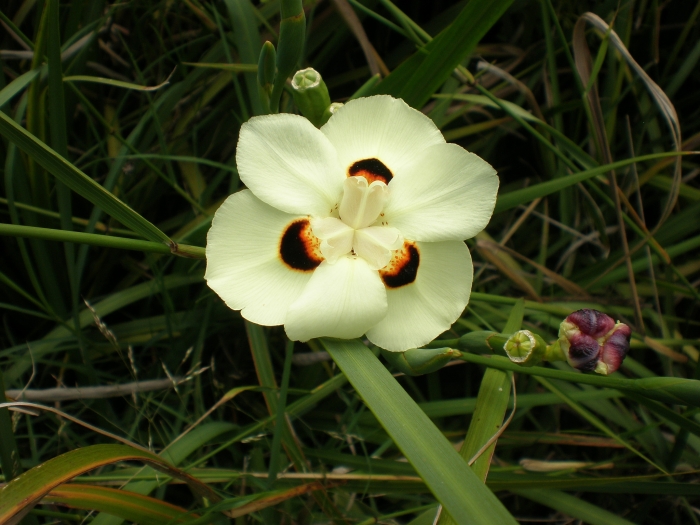African Iris
(Dietes bicolor)
African Iris (Dietes bicolor)
/
/

Consultaplantas
CC BY-SA 4.0
Image By:
Consultaplantas
Recorded By:
Copyright:
CC BY-SA 4.0
Copyright Notice:
Photo by: Consultaplantas | License Type: CC BY-SA 4.0 | License URL: https://creativecommons.org/licenses/by-sa/4.0 | Uploader: Consultaplantas | Publisher: Wikimedia Commons | Title: Dietes_bicolor_2c.JPG | Notes: User created page with UploadWizard |


















































Estimated Native Range
Summary
Dietes bicolor, commonly known as African Iris or Fortnight Lily, is an evergreen perennial herb. It is native to the Eastern Cape and KwaZulu-Natal provinces of South Africa, where it thrives in grasslands and open woodlands, often in damp places. The plant typically grows to a height and width of 2-3 feet (0.6-0.9 meters). Dietes bicolor has long, sword-like, pale green leaves and forms clumps through its rhizomatous growth habit. The flowers are showy and distinct, with pale yellow petals marked by three dark purple spots surrounded by an orange outline, blooming in spring and summer. After flowering, it produces a capsule that can weigh down the flower stalks as it dries and splits to release dark brown seeds.
The African Iris is valued for its drought tolerance, low maintenance, and the striking appearance of its blooms. It is commonly used in urban landscaping, border planting, and as an accent in gardens. It prefers dappled shade to full sun, flowering more profusely in brighter light. While it tolerates a range of soil types, it does best in well-drained soils with regular watering, though it can withstand dry periods once established. It is not known for major disease problems but can be affected by snails and slugs. In regions with colder climates, it may require winter protection or be grown in containers that can be moved indoors.CC BY-SA 4.0
The African Iris is valued for its drought tolerance, low maintenance, and the striking appearance of its blooms. It is commonly used in urban landscaping, border planting, and as an accent in gardens. It prefers dappled shade to full sun, flowering more profusely in brighter light. While it tolerates a range of soil types, it does best in well-drained soils with regular watering, though it can withstand dry periods once established. It is not known for major disease problems but can be affected by snails and slugs. In regions with colder climates, it may require winter protection or be grown in containers that can be moved indoors.CC BY-SA 4.0
Plant Description
- Plant Type: Herb
- Height: 1.5-2 feet
- Width: 0.8-1 feet
- Growth Rate: Moderate
- Flower Color: Yellow, White
- Flowering Season: Spring, Fall
- Leaf Retention: Evergreen
Growth Requirements
- Sun: Full Sun, Part Shade
- Water: Medium
- Drainage: Medium
Common Uses
Bee Garden, Border Plant, Butterfly Garden, Deer Resistant, Drought Tolerant, Fire Resistant, Low Maintenance, Potted Plant, Rabbit Resistant, Showy Flowers, Street Planting
Natural Habitat
Grasslands and open woodlands in Eastern Cape and KwaZulu-Natal provinces of South Africa
Other Names
Common Names: Fortnight Lily, Yellow Wild Iris, Peacock Flower, Evergreen Iris
Scientific Names: , Dietes bicolor, Moraea bicolor,
GBIF Accepted Name: Dietes bicolor (Steud.) Sweet ex Klatt